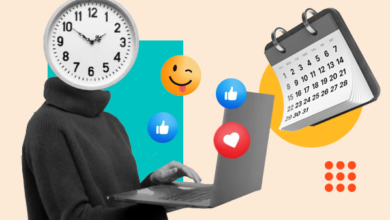Savings, normalization and price paranoia will be the consumption trends in 2025

Gartner research shows that consumers are coming to view thrift as an aspirational virtue, openly resisting consumerism for self-improvement and similar reasons. Gartner also detects a widespread trend called “normalization” – essentially seeking reassurance about personal behaviors and attitudes by comparing them to objective, community standards. Consumers have also been paranoid about unexpected and inconsistent costs and prices.
Additionally, 74% of consumers say they are open to automated technologies, including drone delivery and cashierless stores. We spoke with Kate Muhl, consumer and cultural insights expert at Gartner, about the importance of these findings. (The full report is available only to Gartner clients.)
A healthy economy. A generation of “new Spartans” is embracing saving, almost as a lifestyle choice. Certainly, the desire to save is not unrelated to the recent fight against inflation, but it seems to have taken on a broader meaning. In the Gartner study, 88% of consumers reported engaging in one or more under-consumption behaviors than they would have two years ago. Examples include:
Use products longer rather than replacing them. Choose to buy second-hand or do it yourself rather than already assembled. Repair rather than buy new.
Yes, prices are a concern for consumers, but 68% cited lifestyle or self-improvement reasons for their under-consumption behavior, including:
Declutter and simplify life (45%). Feel better about yourself (35%). Prove to myself and others that I could (28%). Environmental concerns (23%).
“I guess I’m never surprised by a consumer’s ability to take something and turn it into a way to tell a story about themselves,” Muhl said. “It’s like taking something that you might be obligated to do and turning it into something that you control and can turn into a ‘brag.'” She noted that there were no signs yet, despite falling inflation, a return to “90s-style conspicuous consumption.” Maybe we’ll see that in a year or two. Right now, austerity is something that you have the strength or the wisdom to adopt.
Could this also be a sign that people prefer experiences over products? “Yes, I think that’s fair,” Muhl said. “The long tail of an experience you paid for is way better than a sweater.”
Are you normative? In an uncertain world, consumers seek objective (or at least community) references for their actions and opinions. They say they are looking for:
Clearly established limits (76%). An ability to label and categorize things (64%). An understanding of themselves and their place in the world (57%). A sort of “playbook” for progressing in life (48%).
It’s not a new concept, Muhl said, but it has recently gained momentum. In 2018, she said, there was a major trend in search called “My Data, My Me,” because people were interested in the data trails they left behind that were unique to them. . This goes against the idea of standardization. “What we don’t know these days is how we fit into the big picture,” she said. “You can’t see the forest because of the trees, which is bad because you are a tree in the forest. You want to know, am I a big tree, am I a small tree, how many trees are there in this forest?
Paranoid about the price. Nearly 60% of consumers were unsure of the true final cost of a purchase. Reasons included:
The service bill increased while usage did not increase (38%). Differences between online and in-store prices (31%). Price change in cart (29%). Hidden or unexpected fees (23%).
Of the trends considered, this one probably has the biggest impact, Muhl said. Given the current rate of inflation, “consumers should feel good,” she said. “And yet either that’s not the case, or repairing their feelings about costs is happening much more slowly than many of our customers would like to see.”
Businesses like stability, she observed. They don’t like sudden cost increases; they must be able to plan. “Why shouldn’t individuals be the same? »
Why we care. There is no shortage of big data sets to tell us what consumers are doing: how much they are spending and how they are shopping. Tracking consumer behavior is practically an industry during the holiday shopping season, in particular. And all of this is precious.
What Gartner seeks to add, by examining cultural and consumer trends, is an understanding of the deeper belief systems that drive consumer behavior, and the challenge is to do this at scale rather than seeking to psychoanalyze buyers one by one.
(Note: Research on comfort level with drones surely predates the current news cycle!)



